I have a function that generates a grid of boolean values using a Cellular Automata simulation. The thing that I want is to be able to add a border around pixels. So something like this
Add one pixel outline:
Add another pixel outline for a total of a 2-pixel outline:
Basically the same thing as Pixilart's outline tool
I have this function that generates the grid with Cellular Automata, with each "pixel" being either true or false
fn generate_grid(width: usize, height: usize, iterations: usize) -> Vec<Vec<bool>> {
let mut grid = vec![vec![false; width]; height];
for row in grid.iter_mut().skip(1).take(height - 2) {
for cell in row.iter_mut().skip(1).take(width - 2) {
*cell = rand::random();
}
}
for _ in 0..iterations {
let mut new_grid = vec![vec![false; width]; height];
for y in 1..height - 1 {
for x in 1..width - 1 {
let mut solid_neighbors = 0;
for dy in -1..=1 {
for dx in -1..=1 {
if grid[(y as isize + dy) as usize][(x as isize + dx) as usize] {
solid_neighbors += 1;
}
}
}
if solid_neighbors >= 5 || solid_neighbors == 0 {
new_grid[y][x] = true;
}
}
}
grid = new_grid;
}
grid
}
And another function that converts this grid to a grayscale image. Though this is simply just to check the final grid visually, and doesn't really serve a purpose.
fn grid_to_image(grid: &Vec<Vec<bool>>) -> GrayImage {
let width = grid[0].len();
let height = grid.len();
let mut image = ImageBuffer::new(width as u32, height as u32);
for (x, y, pixel) in image.enumerate_pixels_mut() {
let color = if grid[y as usize][x as usize] {
255u8
} else {
0u8
};
*pixel = image::Luma([color]);
}
GrayImage::from_raw(width as u32, height as u32, image.into_vec()).unwrap()
}
I imagine the function to look something like this, but I just can't wrap my head around what exactly I need to do.
fn add_pixel_border(grid, n_pixels, value) -> &Vec<Vec<bool>> {
// Set neighbors of all 4 sides of value to value. The part I'm having trouble with
if n_pixels > 0 {
return add_pixel_border(grid, n_pixels - 1);
}
grid
}
I've tried multiple times thinking of ways to write the function, but I'm just having a hard time at setting the up, left, down, and right pixels to black


